As a small business owner, you've got a lot on your plate – we get it. That’s why we’ve put together a ready-to-copy schedule to help you carve out time for marketing and build a plan that works. Let’s make marketing simple and stress-free, one day at a time.
Why a marketing calendar is a must-have
While everyone agrees a calendar is important, they don’t often build one because it doesn’t seem quite as crucial. When you set aside a small chunk of time to set up a simple marketing calendar, everything falls into place.
Think about all the moving parts in your business. A marketing calendar helps you see the big picture so you can:
- Stay organized. Knowing your schedule means fewer surprises and more time to create engaging social media posts, work on your content strategy, or plan email marketing campaigns. You'll be surprised at just how much time and energy you can reclaim.
- Keep your team aligned. A shared campaign calendar makes sure everyone knows their role. This way, the entire team is working towards the same marketing goals.
- Track your progress. If you're not documenting your efforts, you might never know how much you've achieved—or where you could do better. A simple, well-planned calendar lets you monitor your marketing projects and adjust your strategy as needed.
In short, even though it might seem like just another tool, a simple marketing calendar is a smart investment.
A quick introduction to your 30-minute-a-day marketing plan
It might sound too good to be true, but just 30 minutes a day can be just enough for your marketing strategy. We’re not asking you to overhaul your entire marketing plan – just a focused half-hour to keep your efforts on track! Here are three key practices to make it work:
- Pick a consistent 30-minute block. Find a time each day when you can really focus – maybe first thing in the morning, or right after lunch? Using the same time slot makes it easier to build a habit.
- Eliminate distractions and focus on one task. When it’s your 30-minute marketing window, shut out the noise. Close your email, mute notifications, and zero in on one marketing task at a time.
- Prioritize tasks that drive results. Instead of spreading yourself too thin, pick one key task that moves your marketing strategy forward. One day you might work on campaign planning for upcoming social media posts; the next day, you could adjust your paid advertising schedule.
Dedicating just 30 focused minutes each day to your marketing initiatives can help you run multiple campaigns smoothly, save time, and ultimately retain customers more effectively.
Your weekly marketing schedule
This is your ready-to-copy daily plan that breaks down your marketing activities into bite-sized tasks. By dedicating 30 minutes each day, you can stay on top of your marketing strategy without feeling overwhelmed.
Monday: strategy & planning
Use Monday to map out your week with just a handful of clear tasks – it's a small effort that sets a big tone for success.
Review analytics
Start by checking your website, social media, and email metrics. If you’re new to this, try using tools like Google Analytics for your website and Facebook Insights for social media. Look for simple numbers – like which posts got the most views or which email had the best open rate – to see what's working. If you have enough data, take a moment to compare this week’s numbers with last week’s performance.
Plan key marketing actions
Decide what to focus on this week. Maybe it's a new email campaign, or you have to prepare fresh social media posts? Write down your main goal. For example, 'I want to increase engagement on Instagram this week,' or 'I need to send discount mails to my customers. '
Schedule content & ads
Use a marketing calendar template or a digital marketing calendar – you can do that in Capsule CRM, but even a simple Google Calendar will do. Slot in your upcoming posts and any paid advertising activities. Label your events clearly – for example, 'Facebook Ad – launch email campaign' or 'Instagram Post – new product teaser.'
Do a quick competitor check
You won’t get a complete competitor analysis in just 30 minutes, but a quick look at your competitors’ social media or website can offer useful hints. Note any ideas that catch your eye. Free tools like Google Trends can help you see popular content in your industry.
If you run a small bakery and sell bagels, simply put 'bagels' into Google Trends and see which pages or topics gain traction:
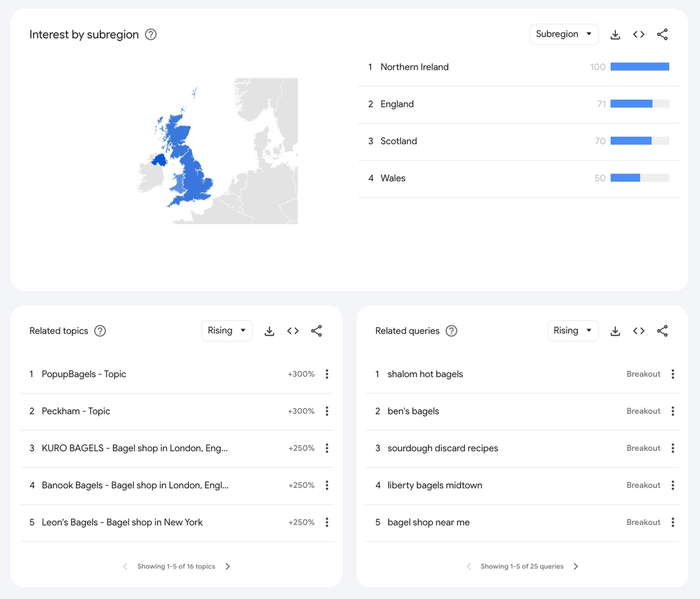
Set mini goals and review last week:
Take a moment to set one or two simple goals for the week, like increasing your post frequency or trying a new type of content. Also, glance back at what you did last week – what worked and what didn’t – so you can adjust your plan accordingly.
Tuesday: social media & engagement
Tuesday is perfect for catching up on Monday’s planning and setting your social channels up for the week ahead. Focus on your social media presence and build connections with your audience.
Plan a social post
Craft a quick post that connects with your audience – be it a behind-the-scenes moment, a small tip, or a customer appreciation shout-out. With Canva, you can choose a template and post it right away.
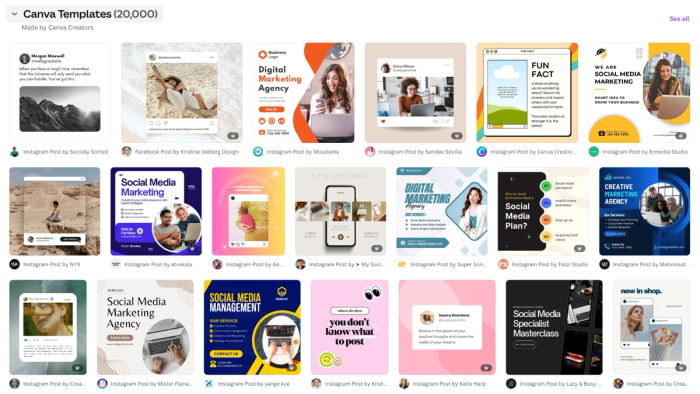
Engage with your audience
Make a habit of replying to comments and answering messages, and actively engage with posts that mention your brand. By sparking an engagement loop – where one reply leads to another – you improve your social media campaigns and ensure your marketing efforts resonate across all channels.
Join conversations
Don’t limit yourself to your own playground – step out and join online groups or communities where your target audience hangs out. Your input in these spaces can positively impact your visibility. Here are four examples of places to engage:
- Facebook groups: Join groups focused on small business marketing or local business networks. Try to get to know your audience: their pain points, challenges, and questions.
- LinkedIn groups: Engage in discussions with other professionals about marketing initiatives to refine your digital marketing calendar.
- Reddit communities: Participate in subreddits like r/smallbusiness or r/marketing. You’ll find plenty of conversations you can quickly tap into.
- Local business forums: Look for events -—whether virtual or face-to-face -—where your target audience connects. For online events, register and engage immediately; for offline ones, check the sign-up process and determine if they're worth your time.
Each of these spaces is a great opportunity to get ideas for your marketing campaign calendar, share your expertise, and learn new ways to keep your marketing efforts on the same page.
Review engagement metrics
Take a brief look at key metrics from your recent post performance.
- If a post shows high engagement: Create a follow-up post using a similar style or topic to capitalize on its success.
- If a post gets low clicks but decent reach: Revise the call-to-action or merge its elements with content that’s performing well to improve performance.
- If a post has low engagement overall: Consider deleting or reworking the copy and imagery for a fresh take next time.
- If a post generates a lot of conversation: Use that feedback to refine future posts, ensuring your content resonates even more with your target audience.
Wednesday: content creation
Spend 30 minutes focused solely on creating fresh content that aligns with your overall marketing strategy. Use your editorial calendar to identify key dates and scheduled marketing activities.
Write a quick article draft
Thirty minutes might not be enough to write a full article from start to finish – unless you’re leaning on AI to do most of the heavy lifting! However, spending just half an hour drafting an outline or a rough draft is a great way to kick off your work for the week. This initial draft sets the foundation for a complete article that you can polish later.
If you’re stuck on ideas, here’s how to jumpstart your creativity:
- Look for inspiration on platforms like AnswerThePublic, Google Trends, or industry blogs. For example, you can use Google Trends to see how topics perform across different verticals over time, and then choose your topic based on that data.
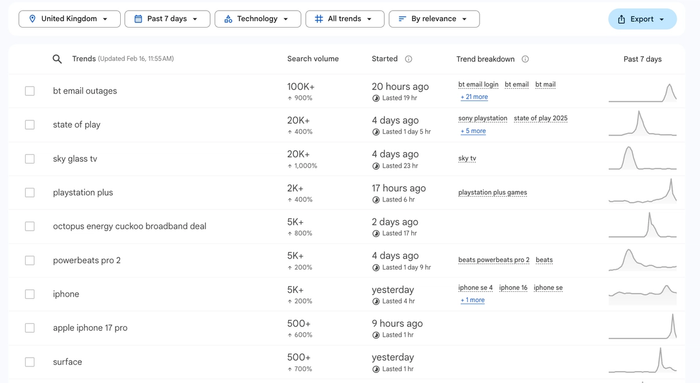
- Check your content calendar for upcoming product launches, industry events, or in-person events that might spark a timely topic.
- Use free templates to structure your ideas and maintain a detailed schedule.
This quick session helps you lay the groundwork so you’re not staring at a blank page later in the week.
Repurpose existing content
For small businesses, time is always in short supply. Constantly creating brand-new content can be exhausting and impractical. Instead, repurposing what you already have is what you need! Reusing and refreshing existing content helps you reach your audience without starting from scratch every time. Here's what you can do with a single piece of content:
- Update & expand. Refresh an older blog article with new data or insights to make it more comprehensive. For example, look for a new set of statistics usingat Perplexity.ai and add them to your blog articles.
- Create a summary. Break down a long article into a series of bite-sized posts or a checklist that highlights the main points.
- Bundle related posts. Merge a series of related articles into a single, robust resource guide that showcases your expertise.
- Change the format. Convert a written piece into a visual infographic, slide deck, or even a short video. Use tools like Opus to automate this process for you.
- Adjust the angle. Reframe the content by focusing on a different aspect of the topic to appeal to another segment of your target audience.
Update your content calendar
You can never have too many ideas. Keep adding them to your content marketing calendar. Whether it’s brainstorming topics for future blog articles or planning social media campaigns, make sure your calendar view is fresh and up-to-date with all scheduled marketing activities.
Thursday: outreach & networking
You've already created a lot of materials this week, so how about putting them into motion? Thursday is all about reaching out and connecting – just 30 minutes can open new doors for your business.
Connect with potential partners
When you come across someone you could potentially collaborate with, send them a friendly message.
It could be an influencer, another small business, or a local event planner. A short note can lead to exciting collaborations.
Hi [Name],
I’ve been following your work at [Company/Organization] and really admire your approach to [specific area]. I believe there’s potential for us to collaborate – maybe on [briefly mention idea]. Would you be open to a quick chat to explore possibilities?
Best,
[Your Name]
Pay attention to the names and company names you paste in: pasting “[Name]” or another potential partner’s name into your message could sully your relationship before it’s even begun.
Send follow-up emails
If you've spoken to someone recently, drop them a brief follow-up email. A simple check-in can nurture a budding relationship:
Hi [Name],I just wanted to follow up on our recent conversation about [topic]. I really enjoyed our chat and would love to continue exploring how we can work together. Let me know if you have some time to connect further this week.Thanks,[Your Name]
Initiate cold outreach
Of course, it’s always best to connect with warm leads, but sometimes you need to reach beyond your immediate circle. Identify a few prospects who might benefit from your product or service and craft a brief, personalized message that highlights mutual benefits:
Hi [Name],I came across your profile and noticed your work in [industry/area]. I think there’s a great opportunity for mutual benefit, especially around [specific benefit]. Would you be interested in a brief call to discuss how we might collaborate?Best regards,[Your Name]
Here are three places to find these prospects:
- LinkedIn: Use LinkedIn’s advanced search to identify professionals and companies in your industry. Join relevant groups to see who’s active and might be interested in your offerings.
- Industry directories: Browse industry-specific directories or local business listings. These sources often list companies that could benefit from your service.
- Social media platforms: Look for potential leads on platforms like X or Instagram. Use industry keyword searches to find prospects engaging with content similar to yours.
Search relevant hashtags in your industry – say, #SmallBusinessSuccess – and identify active accounts that engage with similar content. Then, send a friendly direct message introducing yourself, mentioning something specific from their profile, and briefly highlighting how your service could benefit them.
Friday: website maintenance & basic SEO
Wrapping up your regular work on Friday means you can give your website some attention. In just 30 minutes, you can make small improvements that help your online presence.
Check website health
Scan for errors or performance issues using Google Search Console. While it's free to use, the tool can be a bit overwhelming at first due to the volume of data. Google’s help resource and Yoast’s guide offer great step-by-step support for newcomers.
Refresh content
Identify an article or a page that could use an update. For example, if you published something at the beginning of 2024 and included that date in your meta title, updating it to 2025 can improve its relevance. But you can do more than that:
- Refresh outdated information: Update content that no longer reflects current data to keep your post relevant.
- Add new statistics: Incorporate the latest data to improve credibility.
- Add internal links: Insert links to related articles or pages to improve navigation and SEO.
- Tweak the headlines: Refine titles to make them more engaging and optimized for search engines.
- Add quotes or references: Include relevant citations to support your points and add authority.
- Verify that images are working: Ensure all visuals load correctly to maintain a flawless user experience.
- See if you’re missing meta tags: Confirm that each page has compelling meta tags to improve click-through rates and search visibility.
Most CMS tools come with free plugins that help you perform quick and easy SEO checks. Yoast SEO and RankMath are among the most popular.
Run a speed test
Website speed matters: not only is a fast-loading page crucial for user experience, but for SEO too. Search engines use page-load speed as a critical ranking factor for each individual page. Use Google’s free PageSpeed Insights tool to check your page load times – and if you find any minor issues, the tool provides clear instructions on how to fix them. Here’s an example report as well as recommended improvements:
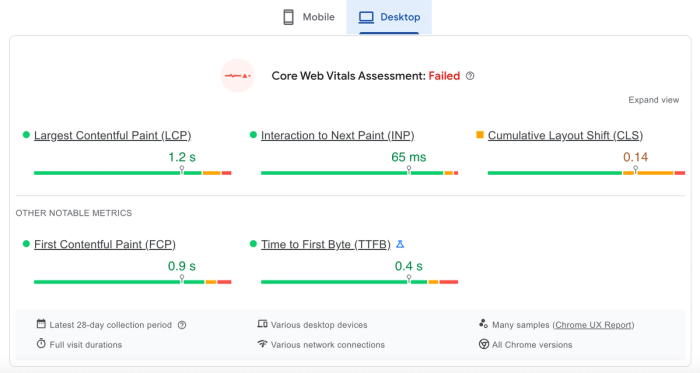
Optional tasks
If you run a small business, here’s what you can do over the weekend – but don't feel pressured to tackle everything. You can also add these tasks to your everyday routine or swap them out for other priorities. Use these optional tasks to refine your strategy and spark new ideas for the coming week:
Explore industry trends
Spend a few minutes browsing the latest industry news and competitor moves to inspire fresh ideas for your marketing campaigns. Check how these trends could shape your marketing calendar or inform your editorial schedules.
For example, Google Trends can help you discover rising search terms in your niche, spot seasonal spikes in interest, or identify emerging topics that can guide your content strategy:
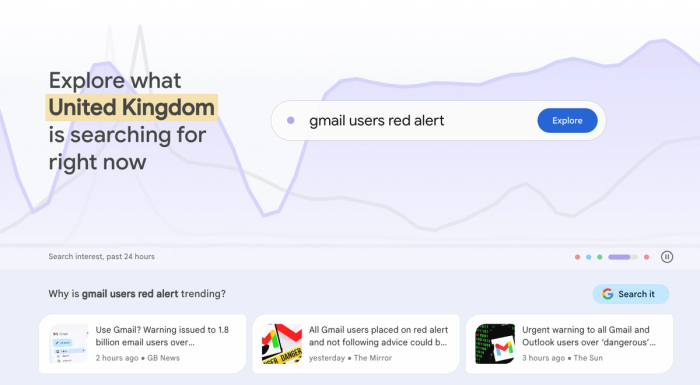
Gather customer feedback
Review customer comments and online reviews to uncover insights that help you retain customers effectively. Use this data to fine-tune your marketing channels and ensure the same data is reflected across your content marketing calendar.
Brainstorm new campaign ideas
Jot down creative ideas for promotions or content themes that you can later plug into your detailed marketing calendar. For instance, draft a series of content that highlights your customers’ successes to reinforce a consistent brand message.
Evaluate new tools and resources
Do you ever feel like there's never enough time to explore new tools? Use the weekend to research free plugins or marketing tools that can ease your workflow.
For example, look for solutions offering customizable calendar views to help your marketing department, social media managers, and team leads track progress across multiple calendars.
Invest in personal learning
Watch a short tutorial or read an article on topics like SEO, content creation, or social media strategy.
Not sure where to start? Check out our list of 40 Best Small Business Resources, Books, Articles and More or Top Small Business Books. These resources are a friendly way to pick up new ideas and keep your marketing sharp.
Marketing calendars, a summary
A marketing calendar gives you clarity and control over your campaigns. It keeps your brand on track and your workload manageable. Take a few minutes to plan and your business will thank you.
Frequently Asked Questions
A marketing campaign calendar isn’t just for large teams – it’s useful for anyone from marketing managers and social media managers to small business owners and freelancers. Even if you’re a one-person operation, having a calendar helps you stay organized and ensures your work remains consistent.
It’s not an absolute must-have, but having one is beneficial. A marketing calendar gives you a full picture of your work, helping you plan, coordinate, and track your marketing efforts effectively.
Start by setting your goals and defining key dates for your campaigns. Then, plan your content by mapping out your campaigns, promotions, and topics, and assign responsibilities and deadlines. Finally, review your calendar regularly to track progress and adjust your plan as needed so that it remains current and aligned with your overall strategy.
There are many types of marketing calendars, but the top three most common ones are the content calendar, which focuses on planning blog posts and articles; the editorial calendar, which schedules the creation and publication of all your content; and the social media campaign calendar, which organizes your posts and campaigns across various social media platforms.



